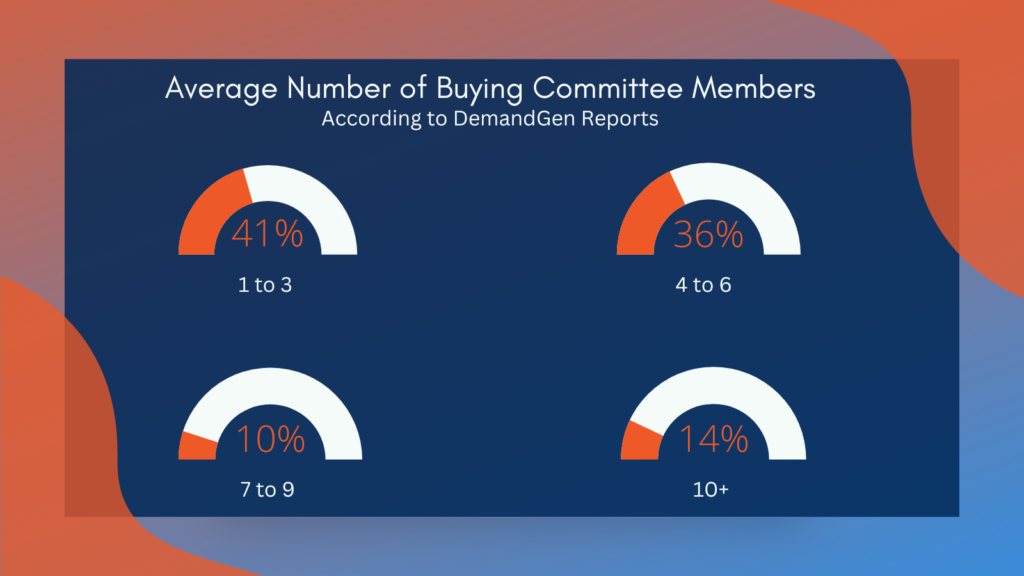The number of decision makers within a buying committee has been on the rise. A recent DemandGen Report shows that an average buying committee now comprises one to three members (41%), four to six members (36%), seven to nine members (10%) or 10+ members (14%).
Your leadership must enable B2B salespeople and marketing professionals to serve all the potential players in a buying committee — otherwise risk the committee transforming into a chaotic circus, with each member in their own disparate performance ring under the Big Top.
A buying organization’s acrobats versus jugglers, tight rope walkers versus unicyclists all have different needs, interests and preferences. Your salespeople and other buyer-facing professionals can play spectator to this buying committee circus — or they can serve as the ringmaster of trusted advisor.
In your selling organization, your sales professionals and marketing professionals both have important roles to play to serve every member of the buying committee and to lead each member to the relevant value of your solution.
EQUIP YOUR SALESPEOPLE WITH KEY COMMITTEE INSIGHTS
With buying committees becoming so complex, salespeople can expect each member of the committee to perform a specific role in the decision process. As such, individual members require personalized communications and resources to meet each of their needs. Below is a sampling of common members and how your salespeople can serve them.
Decision Makers
- Role: Final approval to purchase to include control of economics (budgets, funds), timing and resource allocation (staff, technology).
- Risks: Also has veto power.
- Relevancy: Business and financial impacts will be critical to return on investment as a means of justifying the decision. As the Executive Sponsor their personal reputation is at stake.
Stakeholders
- Role: Vital role in recommending or screening-out solutions during the vetting process.
- Risks: Can vote “no” based on key capabilities or specifications related to the solution.
- Relevancy: Their support (or push-back) to the Decision Makers carries immense weight as they carry influence in the organization and are directly impacted by both the pains and gains related to the purchase. While they do not give final approval, their championing of a solution influences the Decision Maker, acting almost as a “gate-keeper” related to their assessment of the measurable, quantifiable components of the proposed solution.
Users
- Role: Directly use or supervise use related to the solution, so assess the impact the proposed solution will have in the performance of their job.
- Risks: Success is directly correlated to the adoption of the solution.
- Relevancy: Personal pains and gains are critical as they engage with the solution directly in the course of executing their job. As a result, their personal time, compensation, reputation and job security are impacted in context of their job responsibilities.
Influencers
- Role: Shape the buying journey and decision process both directly and indirectly.
- Risks: Disinterest, lack of enthusiasm and even sporadic participation can indirectly sway other members of the buying committee.
- Relevancy: Their recommendations and counsel for the buying committee is often based on their experiences, research and analysis of the proposed solution. With the ear of Decision Maker, Stakeholder(s) and even User(s), they can be a channel for introducing the proposed solution as well as championing the proposed solution along the buying journey but rarely will take personal responsibility related to the decision.
Enable your salespeople with powerful but permeable value messaging and sales tools that can be catered to different buying committee members. Then do not forget to give your salespeople the space to practice the different variations of this messaging.
SUPPORT YOUR MARKETING DEPARTMENT TO BOLSTER YOUR DIGITAL PRESENCE
While you will want to focus on getting your salespeople face-to-face with each of these buying committee members, the modern buyer journey has started to take place largely in a digital space. Here your B2B marketing teams come into play.
Your buyers will likely begin their buying journey with an internet search and thereafter exploring your website. Once on your site, buyers will have an eye out for (1) how easy it is to find content that is relevant to their organization and its needs, (2) how easy it is to find pricing and differentiators from your competitors and (3) the expertise in the industry that your content showcases.
In a survey of 340 B2B executives, 82% indicated that the seller’s content impacted the end decision, and 62% even said that high-quality content was in their top five reasons for choosing a specific solution provider over another.
Like salespeople preparing to connect with different buying committee members on a number of different aspects of a purchasing decision, your marketing team also needs to consider the right mix to serve all the buying committee members along each stage of their journey.
KEEP ALL EFFORTS ALIGNED
With all these different buyer efforts and engagements, your executive teams must keep an eye to internal alignment — for external consistency on behalf of the buyer. A key selling tool sales and marketing should be upholding is your differentiated value proposition. While the professionals in your organization will apply this tool differently per buying committee member and their path on the journey, the core value messaging must be solid and consistent. Turn to the Mereo Value Proposition Formula Worksheet to craft that unifying and powerful differentiated value messaging.

